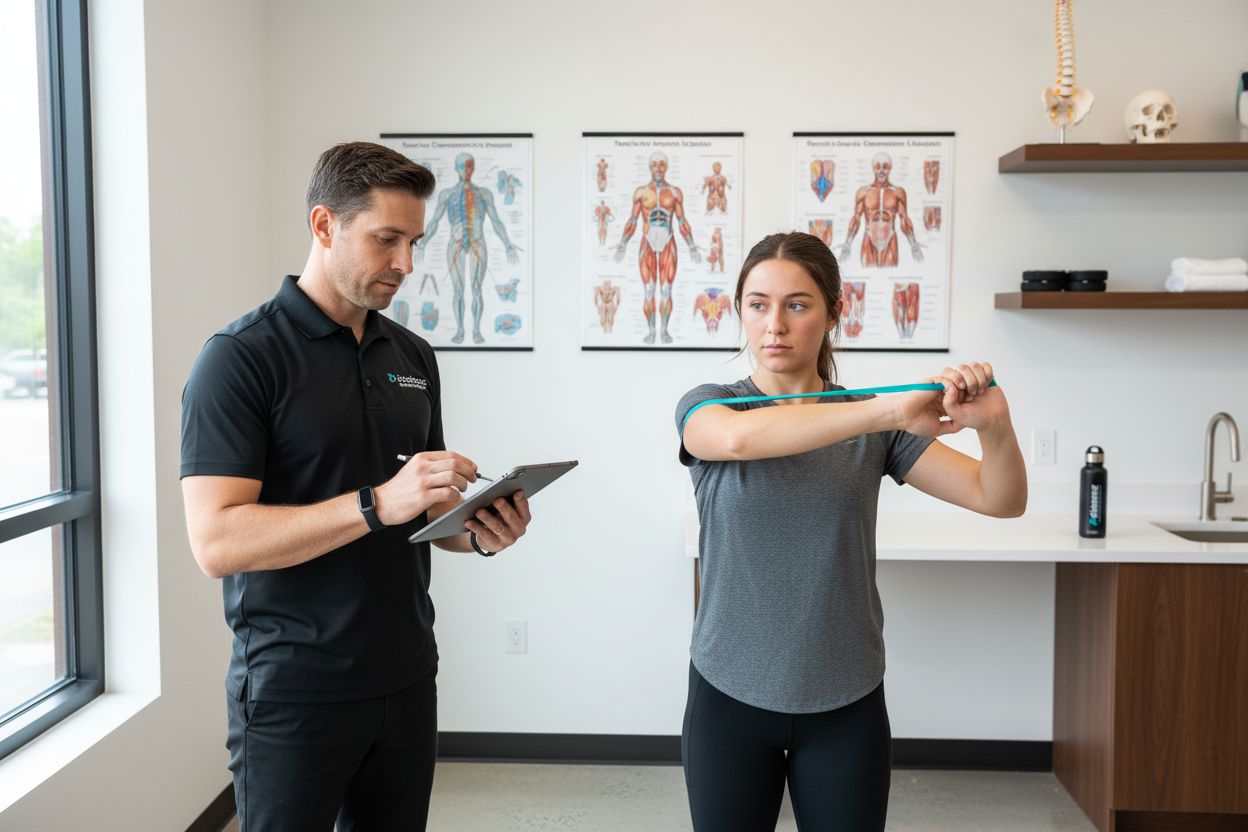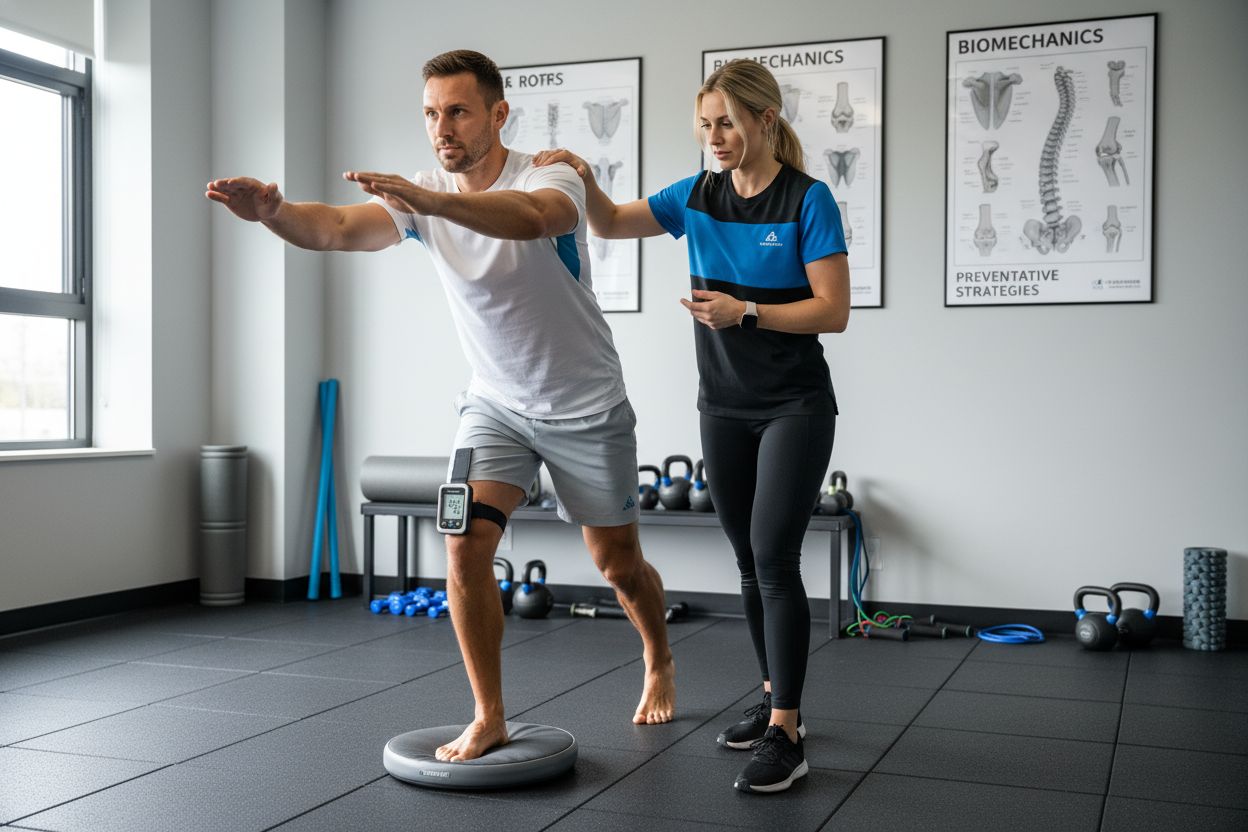Complete Guide to Chiropractic in Sports
- Dr Nathan Bridger

- Oct 23
- 8 min read

Only 10 percent of Australians recognise that sports chiropractic cares for the nervous system, not just bones and muscles. This widespread misunderstanding leaves many athletes and active adults missing out on specialised support that can protect their health and elevate their performance. Knowing what sports chiropractic truly involves helps you make smarter decisions about injury prevention, recovery, and long-term physical wellbeing.
Key Takeaways
Point | Details |
Comprehensive Role of Sports Chiropractors | They focus on optimising athletic performance and injury prevention, not just treating bones and muscles. |
Holistic Injury Recovery Approach | Recovery involves thorough assessment and treatment strategies beyond simple pain relief to prevent future injuries. |
Preventative Care Focus | Sports chiropractic emphasises early detection of issues, enhancing performance and reducing injury risk through proactive strategies. |
Collaborative Health Care | Many sports chiropractors work alongside other healthcare professionals, integrating therapies for optimal athlete support. |
Table of Contents
Defining Sports Chiropractic and Its Misconceptions
Sports chiropractic goes far beyond the common misconception of just treating bones and muscles. Sports chiropractors are specialised healthcare professionals who focus on optimising athletic performance, preventing injuries, and supporting comprehensive musculoskeletal health. According to research from Macquarie University, while 76% of Australians believe chiropractors work with bones, muscles, and joints, only 10% recognise the critical nervous system role in this practice.
Contrary to popular belief, sports chiropractic isn’t about quick fixes or temporary pain relief. It’s a holistic approach that addresses the intricate connections between the nervous system, muscular function, and biomechanical performance. A peer-reviewed survey of Sports Chiropractic Australia members reveals that approximately half of all Australian chiropractors frequently treat athletes, with nearly half of these cases being co-managed with other healthcare practitioners. This collaborative approach underscores the comprehensive nature of sports chiropractic care.
Key misconceptions about sports chiropractic include:
It’s only for professional athletes
Treatment is limited to back and neck issues
Chiropractic care is a one-time solution
In reality, sports injury prevention and care is a dynamic, ongoing process designed to enhance performance, support recovery, and help athletes of all levels maintain optimal physical condition. Whether you’re a weekend warrior or a professional athlete, understanding the true scope of sports chiropractic can transform your approach to health and performance.
Key Benefits for Athletes and Active Adults
Sports chiropractic offers a comprehensive approach to performance enhancement and injury prevention that goes well beyond traditional treatment methods. Active adults and athletes benefit from a targeted approach that addresses biomechanical efficiency, neuromuscular coordination, and holistic body function. This isn’t just about treating pain - it’s about optimising your body’s natural potential and creating resilience against future injuries.
For athletes and active individuals, chiropractic care provides multiple strategic advantages:
Improved joint mobility and range of motion
Enhanced neuromuscular coordination
Faster recovery between training sessions
Reduced risk of chronic and acute injuries
Better overall biomechanical alignment
Each treatment is designed to understand your unique movement patterns and physical demands. Whether you’re a CrossFit enthusiast, a weekend warrior, or a professional athlete, chiropractic services can be tailored to your specific performance goals. The focus is on creating a proactive approach that allows your body to perform at its peak, addressing potential issues before they become significant problems.
Perhaps the most compelling benefit is the preventative nature of sports chiropractic. Instead of waiting for an injury to occur, this approach helps identify and correct subtle imbalances in your musculoskeletal system. This means you spend less time recovering and more time doing what you love - whether that’s crushing your fitness goals, competing at a high level, or simply enjoying an active lifestyle with reduced pain and improved functionality.
Chiropractic Processes in Injury Recovery
Recovery from sports injuries is a nuanced process that demands more than just rest and basic treatment. Chiropractic injury recovery involves a comprehensive, multi-dimensional approach that addresses the root causes of musculoskeletal issues and supports the body’s natural healing mechanisms. According to Australian workforce surveys, sports chiropractors primarily focus on treating musculoskeletal injuries, with a particular emphasis on lower limb and low back pain.
The recovery process typically involves several strategic stages:
Detailed biomechanical assessment
Pain management and inflammation reduction
Targeted soft tissue rehabilitation
Movement pattern correction
Strength and stability rebuilding
Unlike traditional medical approaches that often rely solely on passive treatments, chiropractic care takes a proactive stance. Disc injuries are approached holistically, examining not just the immediate site of pain but understanding how broader movement patterns and muscular imbalances contribute to the injury. This collaborative method often involves working with other healthcare professionals to ensure comprehensive recovery.
The ultimate goal of chiropractic injury recovery is not just healing, but preventing future injuries and optimising overall physical performance. By addressing underlying biomechanical issues, athletes can return to their sports with increased resilience, improved movement efficiency, and a reduced risk of recurring injuries. This approach transforms injury recovery from a reactive process to a strategic opportunity for long-term physical development.

Performance Enhancement and Preventative Care
Preventative chiropractic care represents a proactive approach to athletic performance that goes far beyond traditional treatment models. While public perception surveys reveal that only 18% of people recognise prevention as a core element of chiropractic practice, elite athletes and high-performance professionals understand its critical importance in maintaining peak physical condition and reducing injury risk.
Preventative care in sports chiropractic focuses on several key strategies:
Early detection of biomechanical imbalances
Optimising movement efficiency
Enhancing neuromuscular coordination
Implementing targeted strength and mobility interventions
Developing personalised performance maintenance plans
The core philosophy is anticipation rather than reaction. Back pain prevention strategies, for instance, involve comprehensive assessments that identify potential stress points and movement limitations before they evolve into significant issues. This approach allows athletes to address subtle dysfunction, improve overall body mechanics, and maintain consistent high-level performance without extended recovery periods.
Ultimately, performance enhancement through preventative chiropractic care is about creating a resilient, adaptive body that can withstand the demands of intense physical activity.
By focusing on holistic movement patterns, muscular balance, and nervous system function, athletes can unlock higher levels of performance, reduce injury potential, and extend their competitive longevity. It’s not just about fixing problems - it’s about continuously optimising your body’s natural potential.
Safety, Qualifications, and Professional Standards
Sports chiropractic is a rigorously regulated healthcare profession with stringent professional standards designed to ensure patient safety and high-quality care. According to Macquarie University, Australian chiropractors are evidence-based allied health professionals registered with AHPRA (Australian Health Practitioner Regulation Agency), using non-invasive manual therapies and active care techniques to treat musculoskeletal conditions under professional regulatory frameworks.
Qualification pathways for sports chiropractors involve comprehensive training that goes beyond standard chiropractic education:
Minimum five-year university-level professional degree
Specialised sports and performance-focused postgraduate training
Ongoing professional development requirements
Advanced biomechanical and sports-specific assessment skills
Mandatory registration and compliance with national health standards
Professional development in this field continues to evolve, with institutions like chiropractic services collaborating with international bodies to enhance training standards. CQUniversity’s recent partnership with the International Federation of Sports Chiropractors (FICS) demonstrates the commitment to continuous improvement in education, research, and high-performance sports support.
Patient safety remains paramount, with sports chiropractors employing evidence-based techniques, conducting thorough patient assessments, and maintaining transparent communication about treatment approaches. This commitment ensures that athletes and active individuals receive care that is not only effective but also scientifically rigorous and individually tailored to their specific performance and health needs.
Comparing Chiropractic With Other Sports Therapies
Sports therapies are not one-size-fits-all, and understanding the nuanced differences between various treatment approaches is crucial for athletes seeking optimal performance and recovery. In Australia, multiple allied health professions like chiropractic, physiotherapy, and osteopathy are registered with AHPRA, each offering unique approaches to musculoskeletal care and sports performance enhancement.
Key differences between sports therapy approaches include:
Chiropractic: Focuses on spinal adjustments and joint mobility
Physiotherapy: Emphasises active rehabilitation and exercise-based treatments
Osteopathy: Addresses whole-body structural and functional connections
Remedial Massage: Targets muscle tension and soft tissue recovery
Research highlights the potential for complementary care, with studies showing that combining therapies can produce superior outcomes. For instance, chiropractic services can address joint misalignments while massage therapy simultaneously relaxes muscle tension, creating a synergistic approach to rehabilitation. Physiotherapists typically incorporate more active exercise interventions, whereas chiropractors emphasise manual treatments like spinal adjustments and soft-tissue manipulation on top of active exercise interventions.
Ultimately, the most effective approach depends on individual athlete needs, injury type, and performance goals. Sports therapies are not competing alternatives but interconnected strategies that, when thoughtfully combined, can accelerate recovery, improve biomechanical function, and help athletes return to peak performance more effectively than any single intervention alone.
Here’s a comparison of key differences between common sports therapies in Australia:
Therapy Type | Primary Focus | Main Techniques | Typical Applications |
Chiropractic | Spinal & joint mobility | Manual adjustments Soft tissue work | Joint misalignments Movement efficiency |
Physiotherapy | Functional rehabilitation | Exercise therapy Mobilisations | Injury rehab Strength building |
Osteopathy | Whole-body structural balance | Stretching Soft tissue Manipulation | Posture Chronic pain Mobility |
Remedial Massage | Muscle tension & recovery | Deep tissue massage Trigger points | Muscle soreness Sports recovery |
Ready to Move, Feel and Perform Like a Legend?

You have just read how comprehensive sports chiropractic can help active people build resilience, prevent injuries and recover faster. If you are tired of temporary fixes, and want real solutions that help you stay strong and perform at your best, North Fremantle Chiropractic is here for you. Our approach moves beyond treating pain. We focus on hands-on care, movement correction and real-world strength principles, just like you learned in the Complete Guide to Chiropractic in Sports.

Why wait when you can train smarter, bounce back quicker and enjoy what you love most? Book your first session with our team and experience chiropractic that is fun, professional and always focused on your goals. Feel the difference at North Fremantle Chiropractic and discover how a tailored movement-based plan can keep you winning. Make today the day you invest in your body’s real potential.
Frequently Asked Questions
What is sports chiropractic?
Sports chiropractic is a specialised healthcare practice focused on optimizing athletic performance, preventing injuries, and supporting overall musculoskeletal health, encompassing the functions of the nervous system, muscles, and joints.
Who can benefit from sports chiropractic care?
Sports chiropractic care is beneficial for athletes of all levels, from professionals to weekend warriors, as well as active adults seeking to enhance their physical performance and prevent injuries.
How does chiropractic care assist in injury recovery?
Chiropractic care assists in injury recovery through a comprehensive approach that includes biomechanical assessments, pain management, targeted rehabilitation, and addressing the root causes of musculoskeletal issues to support natural healing.
What are the key benefits of preventative chiropractic care for athletes?
Preventative chiropractic care helps athletes by enhancing movement efficiency, detecting biomechanical imbalances early, improving neuromuscular coordination, and developing personalised maintenance plans, ultimately reducing injury risk and optimising performance.
Recommended

Comments